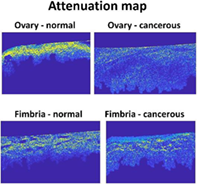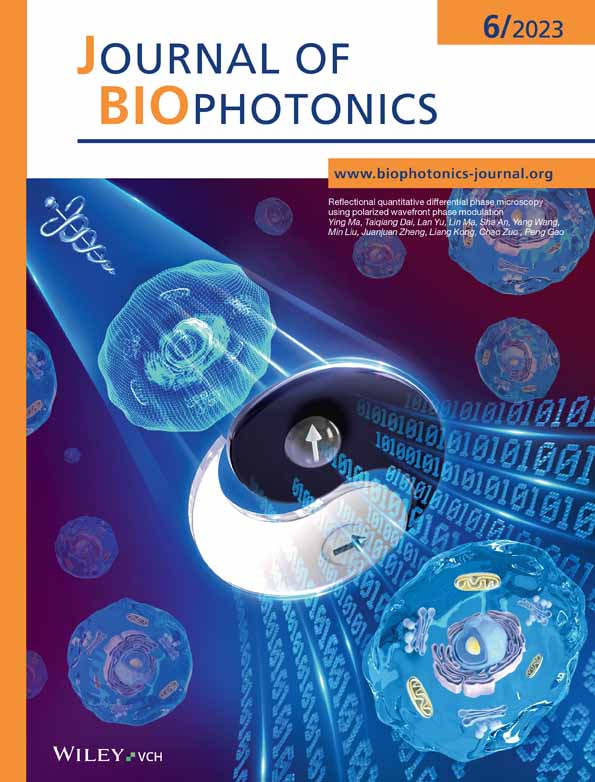Depth-resolved attenuation mapping of the human ovary and fallopian tube using optical coherence tomography
Shuying Li and Hongbo Luo contributed equally to this study.
Abstract
Due to the lack of reliable early-diagnostic tools, most ovarian cancers are diagnosed at late stages. Although optical coherence tomography (OCT) has shown promise for identifying diseased ovaries and fallopian tubes at an earlier stage, previous studies either did not provide quantitative scattering mapping or simply used Beer's law to fit the scattering coefficients of each A-line. In this paper, we calculated the pixel-wise attenuation coefficients of ovaries and fallopian tubes in OCT images. Data from 73 freshly excised human ovaries and fallopian tubes from 36 patients have shown that statistical features are statistically different between cancerous ovaries, infundibula, and fimbriae and normal ones.
CONFLICT OF INTEREST STATEMENT
The authors declare no conflict of interest.
Open Research
DATA AVAILABILITY STATEMENT
Data are available from the corresponding author upon request.




